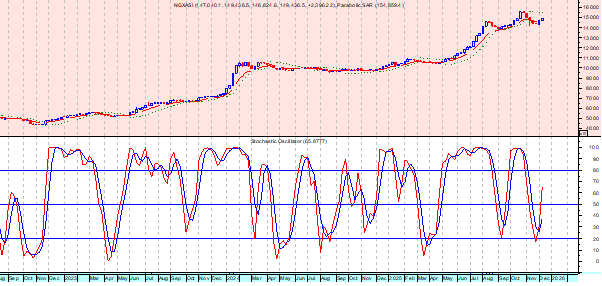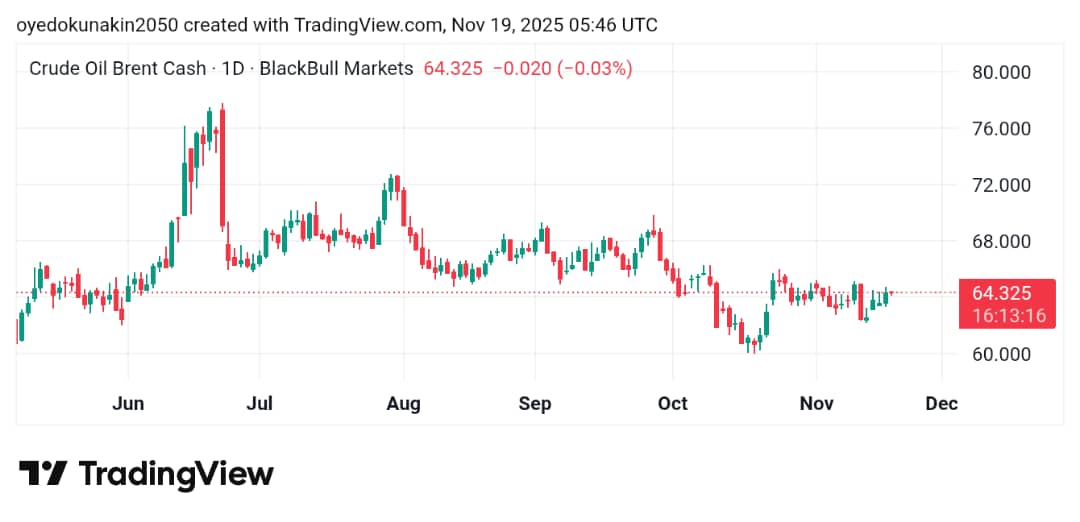
By Rania Gule
Crude oil prices are currently facing complex challenges, stabilizing around the level of $71.50, reflecting a state of uncertainty and pressures stemming from market repricing of expectations regarding interest rate cuts by the U.S. Federal Reserve. As the likelihood of significant rate cuts diminishes, concerns grow over economic growth and energy demand, leading to increasing ambiguity in forecasts regarding oil prices in the coming months.
The performance of the U.S. Dollar Index (DXY), trading near its highest level in 11 weeks at 104.00, also reflects the pressures on oil prices. With rising U.S. yields, the dollar becomes more attractive at the expense of other currencies, which I believe leads to further pressure on oil prices. Additionally, long speculative positions in Brent crude oil futures have decreased for the first time in five weeks, while crude oil futures have seen a decline in net long positions for the third consecutive week.
From my perspective, production developments do not appear positive either, as Norway recorded a 1.5% increase in its oil production in September, reflecting a rise in global supply. Data indicated that the oil market in China experienced a surplus of 930,000 barrels per day in September. Comparisons between crude oil production figures from the National Bureau of Statistics and crude oil imports revealed that implied demand in China, representing the difference between crude oil processing and net exports of petroleum products, was 2% lower than its level from the previous year. In this context, the International Energy Agency (IEA) anticipates a slight increase in demand in China of about 150,000 barrels per day, but without expectations for a sharp rise in demand next year.
It seems to me that the current market situation reflects a mix of factors, including the decline of speculative positions, increased production, and supply surplus in China, which reinforces the overall negative outlook for prices. As the U.S. elections approach, I expect politics to play a significant role in shaping the future of oil prices. Both Donald Trump and Kamala Harris are seeking to present different strategies regarding energy, but the real impact on the oil market often comes from OPEC policies, geopolitical conflicts, supply and demand dynamics, and financial crises.
Under these circumstances, we must consider how U.S.-China relations will impact demand, as the slowdown in China’s economic growth has led the IEA and OPEC to revise oil demand downward for 2024 and 2025. Given the current situation, I believe that a Trump victory could lead to higher volatility in oil markets due to his history of stringent trade policies, which may affect Chinese demand and pose a risk to economic stability.
Geopolitical conflicts in the Middle East and Eastern Europe also represent significant challenges, raising concerns about supply disruptions. The positions of Trump and Harris seem to differ in this area, as Trump is expected to take a more aggressive stance, which could increase volatility, while Harris prefers diplomatic solutions.
Regarding OPEC policies, OPEC production quotas remain a key driver of oil prices. In the event of a Trump victory, this may prompt OPEC to adjust its quotas in response to increased U.S. production, while a Harris win may lead to a more balanced approach.
Additionally, I cannot overlook the global shift towards renewable energy, as the IEA has predicted that 2024 will be a record year for renewable energy, with a 60% increase in consumption by 2030. Harris supports this shift through the Inflation Reduction Act, which may contribute to a decline in global oil demand. In contrast, Trump’s policies are likely to slow this transition, leading to greater support for fossil fuels.
In summary, I see the future of oil prices as heavily dependent on a complex mix of political and economic factors. While the current market performance reflects a state of uncertainty, issues related to global demand, geopolitical tensions, and changes in monetary policies will remain central in shaping future trends. Under this situation, investors and analysts must closely monitor these variables, as rapid changes could significantly and unexpectedly impact oil prices.
Technical Analysis of USOil (WTI) Prices:
From a technical perspective, crude oil prices are facing increasing pressures as markets shake off the impacts of the conflict in the Middle East and supply appears to be abundant. To regain momentum, the price needs to surpass the pivotal level at $71.50 with a daily close, which would provide an opportunity to test the level of $75.13, a significant hurdle. On the downside, the support level at $67.12 should be monitored; if it is breached, the market could decline to the lowest level of 2024 at $64.75, followed by $64.38.
USOIL – WTI – MT4 – Prices Chart -XS.com
Over the past decades, crude oil has followed a major upward channel, experiencing significant movements between the lows of the 19th century and the highs of the early 21st century. During this time, prices faced notable deviations during major global events, such as the COVID-19 pandemic, which led to a temporary decline in prices. However, oil managed to regain its momentum and returned to the upward trend channel, with the highest level in 2022 at $128 aligning with the resistance of the middle channel, while the lowest level in 2024 at $65 coincides with the Fibonacci support level of 0.786.
Currently, the oil market is undergoing a sideways consolidation phase between $78.00 and $64.00, with the overall outlook leaning towards a neutral to bearish sentiment. Momentum indicators suggest a near-term corrective upward move that could reach $75.00 and $78.00 in the medium term, although the price remains below the 200-day simple moving average at $75.37.
The current phase will remain influenced by several fundamental factors, including the U.S. elections that could impact economic and energy policies, as well as the effect of monetary stimulus in China on global demand. Additionally, the OPEC meeting in December will play a crucial role in determining price direction, along with shifts in green energy and geopolitical developments that may affect supply and demand in both the near and long term.
Support Levels: 70.59 – 69.84 – 68.53
Resistance Levels: 72.10 – 72.90 – 74.20
- Gule is Senior Market Analyst at XS.com










